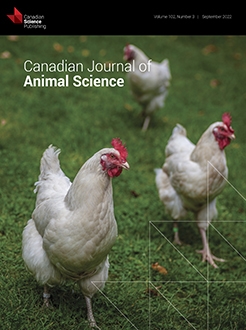There are limited data available on the biology of guinea fowls. The objective of this study was to document post-hatch histological and stereological changes in the oviducts of 56 guinea hens and associated 17β-estradiol profiles until 32 weeks of age and to explore changes in the oviducal mucosal fold as an index of oviducal growth. Mucosal folds in all regions of the oviduct increased significantly (P < 0.0001) from 4 to 28 weeks of age. Concentrations of plasma 17β-estradiol increased from 20 to 28 weeks of age, when it stabilized. Mucosal folds in the oviducts of sexually active hens were highest in the uterine region and lowest in the infundibular lip. Intercorrelations among 17β-estradiol concentration, height of mucosal folds, and oviducal weight were strong and positive in these birds. Most of the oviduct epithelium consisted of pseudostratified columnar ciliated epithelium. Both the height of oviducal folds and peripheral estradiol concentrations increased significantly from 20 to 28 weeks of age, which confirms the role of estradiol in oviducal growth in the avian species. The height of oviducal mucosal folds appears to be a good measure of oviducal growth.
Les données sont limitées sur la biologie des pintades. L’objectif de cette étude était de documenter les changements histologiques et stéréologiques dans les oviductes après l’éclosion de 56 pintades ainsi que les profils de 17β-estradiol associés jusqu’à 32 semaines d’âge, et d’explorer les changements dans les plis des muqueuses de l’oviducte comme indice de la croissance de l’oviducte. Les plis des muqueuses de toutes les régions de l’oviducte ont augmenté de façon significative (P < 0,0001) entre les semaines 4 à 28 d’âge. Les concentrations plasmatiques de 17β-estradiol ont augmenté des semaines 20 à 28 d’âge, lorsqu’il s’est stabilisé. Les plis des muqueuses de l’oviducte des poules sexuellement actives étaient les plus nombreux dans la région utérine et les moins nombreux dans la lèvre infundibulaire. Les intercorrélations entre la concentration de 17β-estradiol, la hauteur des plis des muqueuses, et le poids de l’oviducte étaient fortes et positives chez ces oiseaux. La majorité de l’épithélium de l’oviducte consistait d’épithélium cilié disposé en colonnes pseudostratifiées. La hauteur des plis de l’oviducte et les concentrations périphériques d’estradiol ont augmenté de façon significative des semaines 20 à 28 semaines d’âge, ce qui confirme le rôle de l’estradiol dans la croissance de l’oviducte chez les espèces aviaires. La hauteur des plis des muqueuses dans l’oviducte semble être une bonne mesure de la croissance de l’oviducte. [Traduit par la Rédaction]





